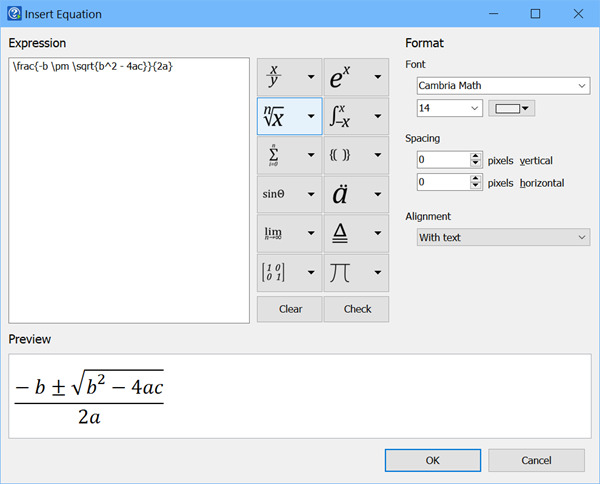The Help+Manual formual editor tool is available in Write > Insert Object. It inserts simple or complex formulas directly into your topic pages.

How formulas are inserted and exported
Formulas are inserted in your topics in encapsulated code in the XML source of the topic. However, when your project is exported this is rendered by the compiler and converted to a bitmap graphic.
Using the tool
Entering expressions
Select the expression you want to enter using the buttons in the middle of the tool. This inserts the LaTeX code in the Expression box and immediately displays the result in the Preview box. You can then edit the code manually, or add additional expressions. If you enter an invalid or unknown expression the preview display will switch to an envelope graphic.
Formatting
Font: |
Choose the math font for the expression. The default is Cambria Math and this will usually work well. |
Font size: |
This adjusts the size of the formula. It is not really the size of the characters, as all the characters are scaled vectors. |
Spacing: |
Adds padding around the formula |
LaTeX-based formulas
The editor uses code based on the standard LaTeX formula syntax, which is displayed and edited in the Expression box. This means that you can use any standard guide to LaTeX math formatting to learn how to manipulate the code displayed.
Restrictions on custom LaTeX code
Note that not all LaTeX math codes are supported, although you will find that almost all basic symbols and expression types are available. If you insert invalid or unsupported code this will be indicated by a standard envelope image for the entire formula:
